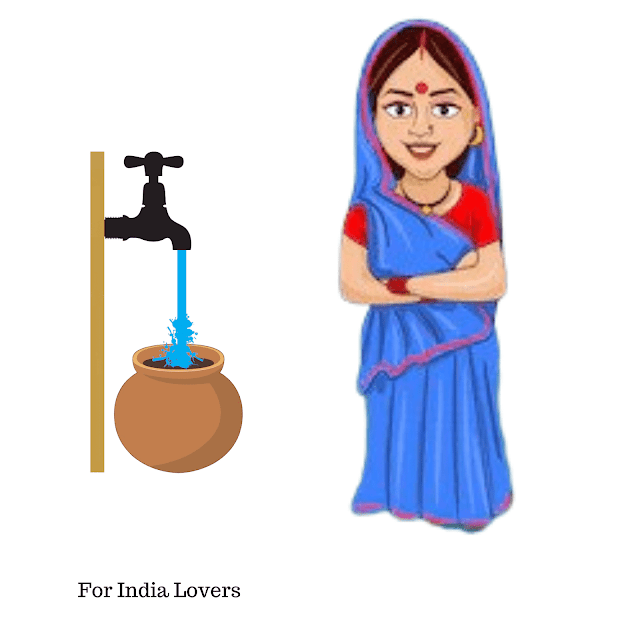Atal Bhujal Yojana / Atal Jal Yojana – Scheme for replenishment of ground water to deal with water crisis
This article talks about the major scheme “Atal Bhujal Yojana” launched by government of India to deal with the situation of upcoming water crisis by increasing ground water level. It also discusses the objectives, funding, needs, target areas and salient features of the scheme.
Introduction
Statistics
Atal Bhujal Yojana
Conclusion
Introduction
India is the 2nd most populous country of the world. It supports 16% of global population on 2.5% of global land but its water resources constitute mere 4% of the entire world. It is difficult to serve such large population with available water resources. The growing population of India, agricultural and industrial needs is putting huge pressure on water resources of country. The need of the hour is to make suitable plans and implement them sincerely so that we can save the current and future generations from water scarcity. One such plan in this direction is Atal Bhujal Yojana.
Statistics
India is the largest extractor of ground water. About 25% of global ground water is available with India. It extracts ground water from 230Km2 annually. In absolute volume, the country is extracting 245 BCM (billion cubic meters) of ground water annually. Out of this volume, 222 BCM is used for irrigation and 23 BCM is consumed for domestic purpose and industrial sectors. Ground water contributes 63% of all irrigation water in India and more than 80% of whole rural and urban domestic water supplies.
According to “World Water Development Report” of UNESCO, ground water wells in India have declined by 54% in last seven years.
NITI aayog says that 75% households in India do not have access to drinking water at their home; 84% households have no access to piped water and 70% ground water is contaminated. It is anticipated that by 2020, twenty one major cities of India would be deprived of its ground water. In 2030, water demand of India may get double of its current water demand and country can witness the state of water scarcity.
Atal Bhujal Yojana
Atal Bhujal Yojana is also called as Atal Jal Yojana. On the occasion of 95th birth anniversary of our formal Prime Minister Sh. Atal Bihari Vapayee, government of India has launched Atal Bhujal Yojana. 25th December 2019 was the launch date of Atal Bhujal Yojana.
Objective
The objective of Atal Bhujal Yojana is better management of ground water and raising ground water level in rural areas.
Coverage Areas
The scheme will be applicable in seven states namely Haryana, Rajasthan, Gujarat, Uttar Pradesh, Madhya Pradesh, Maharashtra and Karnataka. Its benefits will be accrued to 78 districts, 193 blocks and 8350 villages of above mentioned states.
Duration
Atal Bhujal Yojana or Atal Jal Yojana will be in force for next 5 years. Its duration will be from 2020-2021 to 2024-2025.
What is the need?
Ground water in India is an important source for agricultural, domestic and industrial needs. A large population in rural areas is dependent on ground water for survival. Urbanization, industrialization and uncontrolled exploitation of ground water have led to emergence of issue of water stress. 23% blocks in the country are critically exploited or overexploited in terms of ground water. Severe water shortage is impacting both rural and urban areas. Thus, water planning is the need of hour. Atal Bhujal Yojana / Atal Jal Yojana is required for achievement of national goal under “Jal Jeevan Mission” which pledges to supply drinking water though taps to all households of India by 2024. It will aid in doubling farmers’ income. Currently, only 3 Crore households have access to tap water out of total 18 Crore households. The scheme will also helpful in achieving UN target of “Clean water” under SDG 6.
Funding
Atal Bhujal Yojana is a central sector scheme. It is funded by World Bank and central government. The cost of entire scheme is Rs 6000 Cr. Its 50% cost is funded by central government and 50% by World Bank. The funds will be provided to state governments of concerned states in the form of grant. The state would not have any financial burden.
Salient Features of Atal Jal Yojana
The features of the scheme Atal Bhujal Yojana are discussed below:
- Community participation is the key feature of this scheme.
- Monitoring, expansion and dissemination of data
- Panchayat level planning
- Information, education and communication (IEC)
- Utilization of each drop of water an water recycling
- Motivation of gram panchayats for better water management through incentives
- Ensure adequate water storage for farming activities
- Supervision by gram panchayats for better water management and usage
- Improving pattern of water use
- Promoting micro irrigation
- Cooperation with schemes of states
- Strengthening of institutional management
- Monitoring network and capacity building
- Strengthening water users association
- Innovation promotion for more productivity with lesser water volume
- Demand supply management emphasized
- Promoting crops with low water consumption
Conclusion
Water crisis is a global issue. This issue is away from politics and need global concern if we want to survive. Government of India is proactively taking necessary steps to achieve access to drinking water by all the residents of country. Government had already merged ministries of water resources and drinking water & sanitation. The resultant Ministry of Jal Shakti is a single umbrella dealing with different issues related to water like inter-state and international water disputes, drinking water availability, Namai Ganga program, cleaning of water of Ganga and its tributaries, monitoring the flow of rivers, better management and conservation of water, water pollution etc. These efforts reflect vision of government. The public must support these efforts and save water with its effective utilization. Simple measures like rain water harvesting can be utilized for this purpose.
See Other Posts: Children Rights in India, Fit India Campaign






No comments